Float Fishing In Wisconsin: Big Brown Trout, Steelhead, Salmon
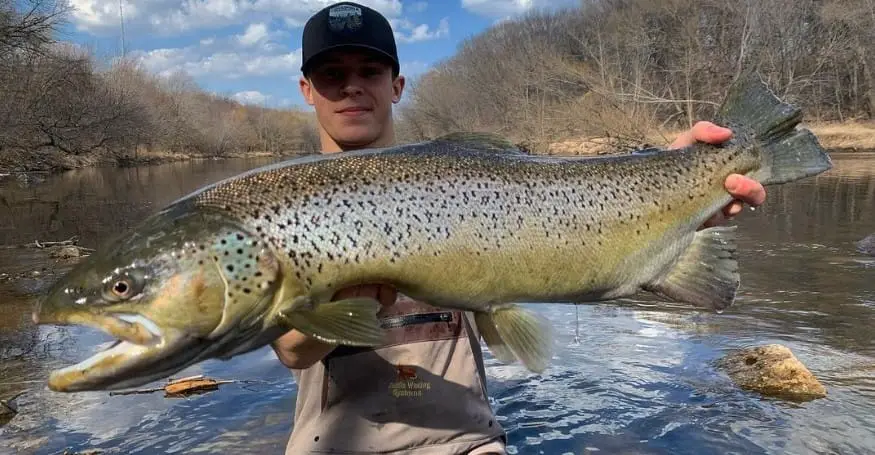
As a seasoned trout and steelhead guide, I have been teaching anglers how to effectively float fish for over twenty years. Wisconsin is renowned for its excellent steelhead, salmon, and trout rivers, and float fishing in Wisconsin is one of the top methods used.
There are a few mistakes that many anglers make that severely limit the amount of fish they catch when float fishing. I teach four fundamentals to effective float fishing and once you grasp these, I am confident you will significantly multiply your catch.
Understanding Float Fishing in Wisconsin
Float fishing is a fishing technique where the bait is suspended under a specialized float or bobber that is specifically designed for river fishing.
This float lets the bait naturally drift downstream with the current. Float fishing is a highly effective method for catching steelhead, salmon, and trout in various rivers.
Though it may appear simple, there are essential elements that must be mastered to maximize success. Over the years, I have determined that the four critical fundamentals of good float fishing are:
- Speed Control
- Depth Control
- Presentation
- Bait Selection
Although most anglers focus on the bait when float fishing Wisconsin streams, two anglers with the exact same baits can leave the river at the end of the day with vast differences in the amount of fish they catch. As vast as 20 to none.
Simply messing up one of these fundamentals can leave an angler fishless.
Wisconsin rivers with depths exceeding three feet are all suitable for float fishing.
I adjust my setup based on the type of water I am fishing. This primarily refers to the depth and velocity of the current.
This adjustment allows me to fish virtually all Wisconsin rivers, even if it means I’m confined to the deeper pools on smaller shallow creeks.
Float fishing is an effective method on all types of streams, from fast to slow and deep to shallower rivers.
I say that if the water depth ranges between three feet and 13 feet, it is ideal for float fishing.
For sections less than three feet deep, especially if the water is crystal clear, the float can scare off the fish. This is why in this kind of water or in smaller pockets shorter than a few feet, I will opt for bottom bouncing methods or fly fishing.
Choosing Reels For Float Fishing
When preparing for float fishing Wisconsin streams, one of the most crucial things is using the right kind of reel. There are three types used for float fishing: Centerpin reels, Spinning reels, and open-face Baitcasting reels.
Centerpin Reels: The Prime Choice for Wisconsin Rivers
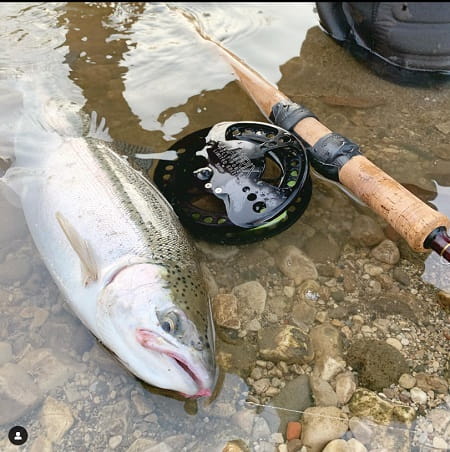
A Centerpin reel is a large round spool mounted on a central pin or post, earning it its name, the Centerpin. This reel, also known as a float reel, is recognized for its high-quality bearings, which allow the reel and line to freely spool off the reel as the current carries the float downstream.
The angler manages the amount of line coming out by applying slight pressure on the reel if it begins to spin too quickly.
Using a Centerpin reel makes lengthy, accurate drifts far easier than other reels without mending or feeding the line out. This greatly enhances my ability to keep the bait in the strike zone for a more extended period resulting in a LOT MORE FISH.
Based on approximately 30 years of experience using Centerpin reels and comparing them to spinning reels and even baitcasting reels, I can without question say that the Centerpin reel is the best reel for float fishing Wisconsin rivers and streams.
See Best Centerpin and Float Reels.
Spinning Reels For Float Fishing
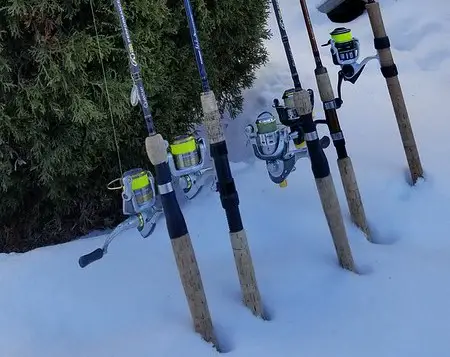
While not as optimal as Centerpin reels, spinning reels are widely used and popular among anglers float fishing Wisconsin rivers and streams. They serve as the second-best alternative for float fishing.
Spinning reels can still deliver good presentation and long drifts, although the line may not release as smoothly as with Centerpin reels.
When selecting a spinning reel to float fish, opt for models capable of holding a large amount of line, equipped with a smooth drag system and a spacious spool that facilitates easy line release.
The spinning reel size should also be chosen based on the size of the river and the target fish. For most river and fishing conditions in Wisconsin, a spinning reel size of 25 or 30 (2500 to 3000) is recommended.
See Best Spinnig Reels For Float Fishing.
Float Rods
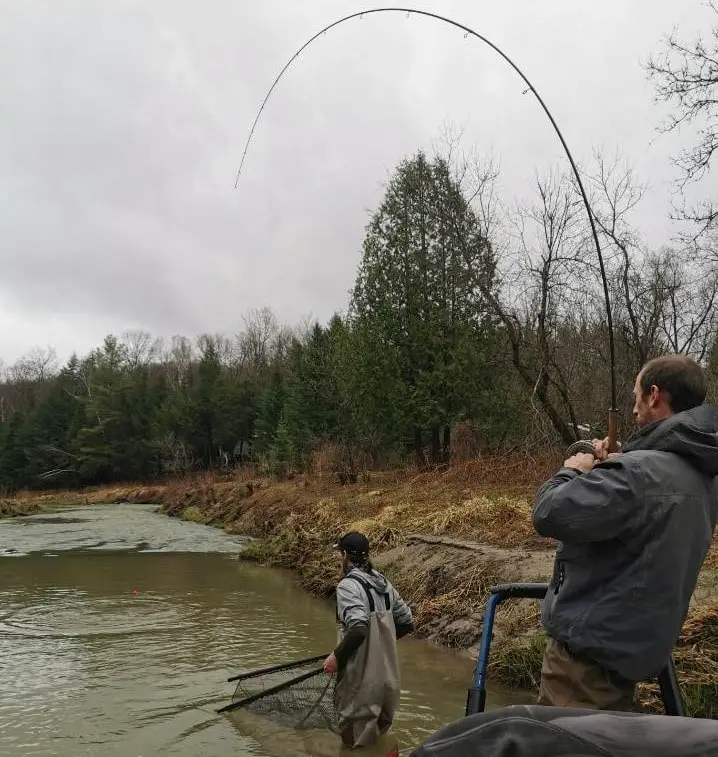
The choice of float rods plays a significant role in steelhead fishing and should not be underestimated.
The rod not only helps in presenting the bait effectively but also aids in fighting larger fish, thus contributing to float fishing success.
You don’t necessarily need to invest in an expensive float rod that costs over $1000; there are plenty of cheaper rods, some even under $100 that work just fine.
Find a rod in your budget and then focus on selecting the right size of float rod instead.
It is recommended to use long rods ranging from 10 to 14 feet to increase the chances of success while float fishing Wisconsin rivers.
A 13-foot rod is my go-to size for most rivers wider than 20 feet, while even longer 10-foot rods can be used in smaller streams less than 15 feet wide.
The size of the river will determine the length of the rod used. Longer rods enhance the presentation by keeping the line up and off the water.
Longer float rods also provide better protection for light leaders, which are frequently required in most Wisconsin rivers. As a general rule, larger rivers call for longer rods. See my article on the Best Float Fishing Rods In All Budgets.
Basic Float Fishing Rig
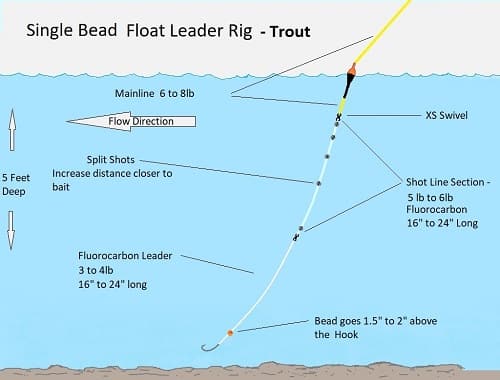
To set up the float fishing rig, I use the following components.
While there are various ways to arrange the leader, I recommend following the tried and tested float leader setup that I use when guiding, which is provided here.
It is crucial to use the correct parts and avoid compromising on their quality or size, as this greatly influences fishing success.
Hooks: Selecting the right hooks is essential for float fishing. Opt for effective hooks that ensure better penetration and secure hooksets.
Among the recommended hooks are the Raven Specimen Hook and the popular Gamakatsu Octopus Hook, which are readily available in most stores.
Hook size should be chosen based on water conditions, fish size, and bait type. Generally, sizes 8 and 10 work well for most Wisconsin rivers, catering to both trout and steelhead. For dirty water and big salmon, I will sometimes use a bigger size 6 hook.
Leader Line: The leader line used for trout and steelhead in Wisconsin rivers holds significant importance in float fishing. It is crucial to find the right balance, choosing a leader that is light enough to be inconspicuous to fish yet heavy enough to prevent break-offs with larger specimens. Consider the following leader line recommendations:
- Trout Fishing: 3 to 4-pound leader
- Steelhead Fishing: Clearwater, smaller rivers: 6 pounds (0.18mm)General purpose: 8 pounds (0.20mm)Large rivers, fast currents, large steelhead: 10 pounds (0.22mm)
- Salmon Fishing: Very clear water and small streams: 10 pounds (0.22mm)General purpose: 12 pounds (0.24mm)Fast water and large rivers: 14 pounds (0.25mm)
It is recommended to use fluorocarbon leaders and have two different sizes on the leader setup. The shot line section should be approximately two sizes heavier than the lower leader section.
Swivels: Swivels are essential to prevent line twisting and are great for connecting two pieces of line. They help prevent line twists during retrieval.
Weights: Opt for dark-colored round split shots that do not have removable wings, as shiny weights may spook the fish or attract unwanted attention.
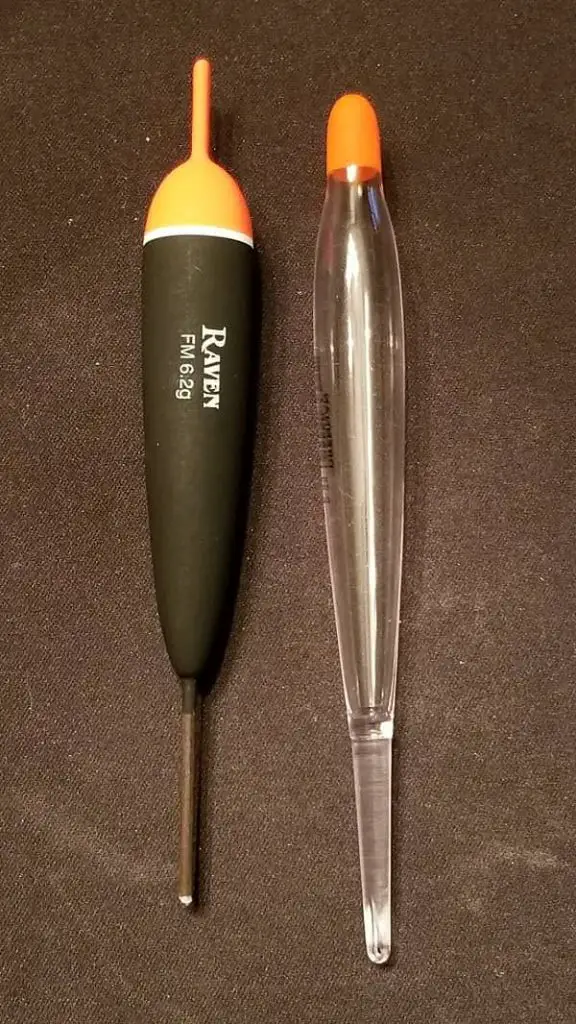
Floats: The choice of floats significantly impacts my float fishing experience. Avoid round floats and opt for thin floats with a pointed top.
This type of float enables better speed control, depth detection, and bite detection, leading to increased success. The Drennan Loafer Floats and Raven FM Float
When selecting a float, consider the type of water you’ll be fishing, including the depth and size of the river.
The following are my go-to floats:
- Drennan Loafer Floats: These floats are ideal for clear and slow-moving water conditions. They offer excellent control over speed and depth.
- Raven FM Floats: These floats are versatile and perform well in various fishing situations. They are a reliable choice for most Wisconsin rivers.
Float size should be chosen based on the specific requirements of the water. Opt for larger floats weighing between 8 to 16 grams for deeper and faster-moving water that necessitates more weight.
A 16-gram float would be suitable for very large rivers like the Niagara River. For most Wisconsin rivers, a 4-gram to 6-gram float is preferred.
Split Shots/Weights
When it comes to split shots or weights, it is recommended to use dark-colored round split shots. Shiny weights or those with removable wings should be avoided as they can spook the fish or attract unwanted attention. Subdued weights that don’t distract from the bait are preferred.
Best Baits To Float Fish
Selecting the right bait is crucial for success in Wisconsin. While there is a wide range of baits available, it is important to focus on the most effective and consistent options. These baits have been proven to yield results and are favored by experienced guides. Consider the following baits.
- Salmon Eggs and Trout Eggs: These baits can be highly effective for trout, steelhead, and salmon during certain times of the year.
- Worms: Worms are generally reliable baits, especially during the spring season. They can also be effective throughout the year.
- Artificial Flies: Artificial flies, commonly used by fly fishermen, can be effective at any time of the year and are often highly successful.
- Live Baits: Insects such as crickets, hellgramites, stoneflies, beetles, mealworms, grubs, minnows, leeches, and crayfish can all serve as effective live baits for float fishing.
- Artificial Baits: Plastic imitations of various baits, such as Powerbait Doughs, can also be used effectively.
Tips for Catching More Fish When Float Fishing Wisconsin Streams
To maximize the amount of fish I catch while float fishing, it is crucial to follow a simple formula for success. Each component of the formula plays a vital role, and neglecting any aspect can hinder the fishing results. Here are some tips to consider:
- Pay attention to presentation: A well-presented bait greatly increases the likelihood of a successful hookup. I ensure my bait size matches the hook, and use a leader that is thin enough to be inconspicuous to the fish.
- Control Bait and Float speed: Speed control is critical. Adjust the bait’s speed to match the natural food sources drifting down the river; often, this means the float should be moving slightly slower than the surface current.
- Maintain an effective depth: It is essential to position the bait within the fish’s strike zone. Adjust the float depth accordingly, taking into account the water conditions and fish behavior.
- Choose the right bait: Select baits based on the prevailing conditions and adjust if necessary. I rotate through different baits, sizes, and colors until I determine the most effective option.
- Use more than one bait at a time: Two baits work better than one, but before doing this, be sure to check the Wisconsin DNR website for using multiple baits, which baits are permitted, and other laws.
Tight Lines,
Graham
